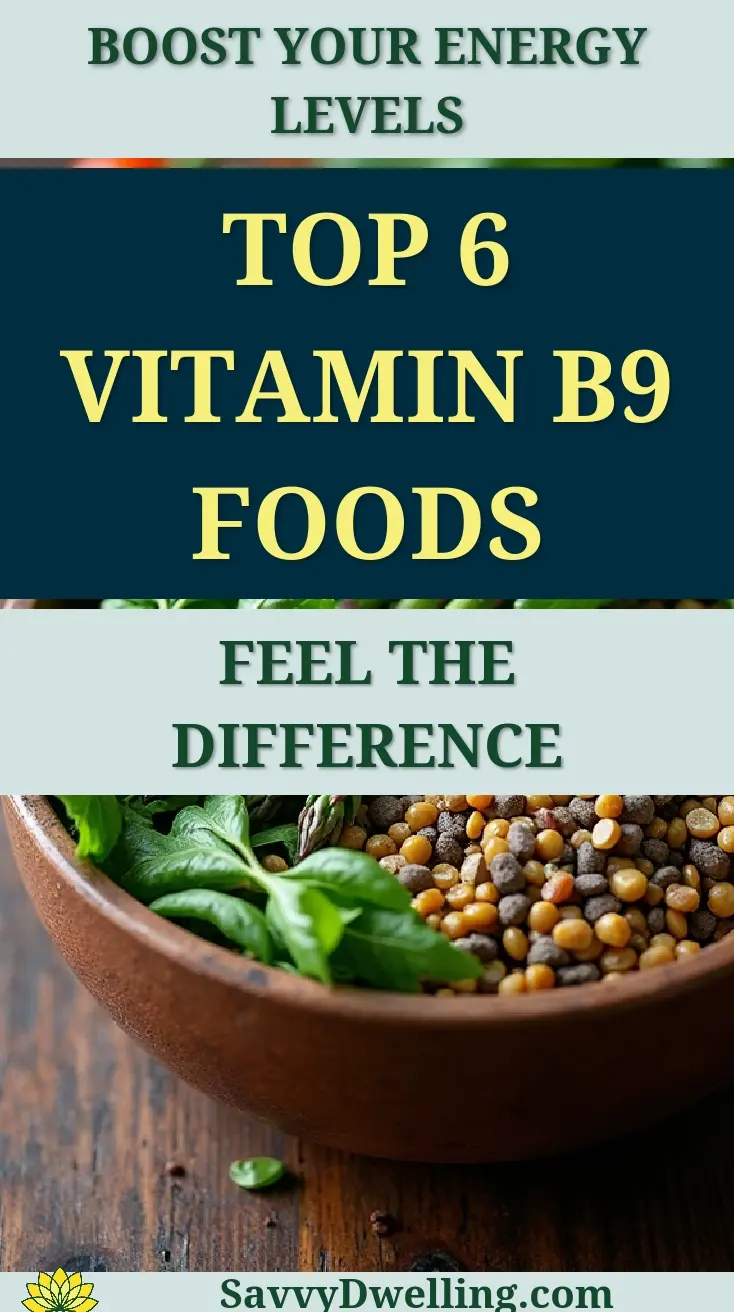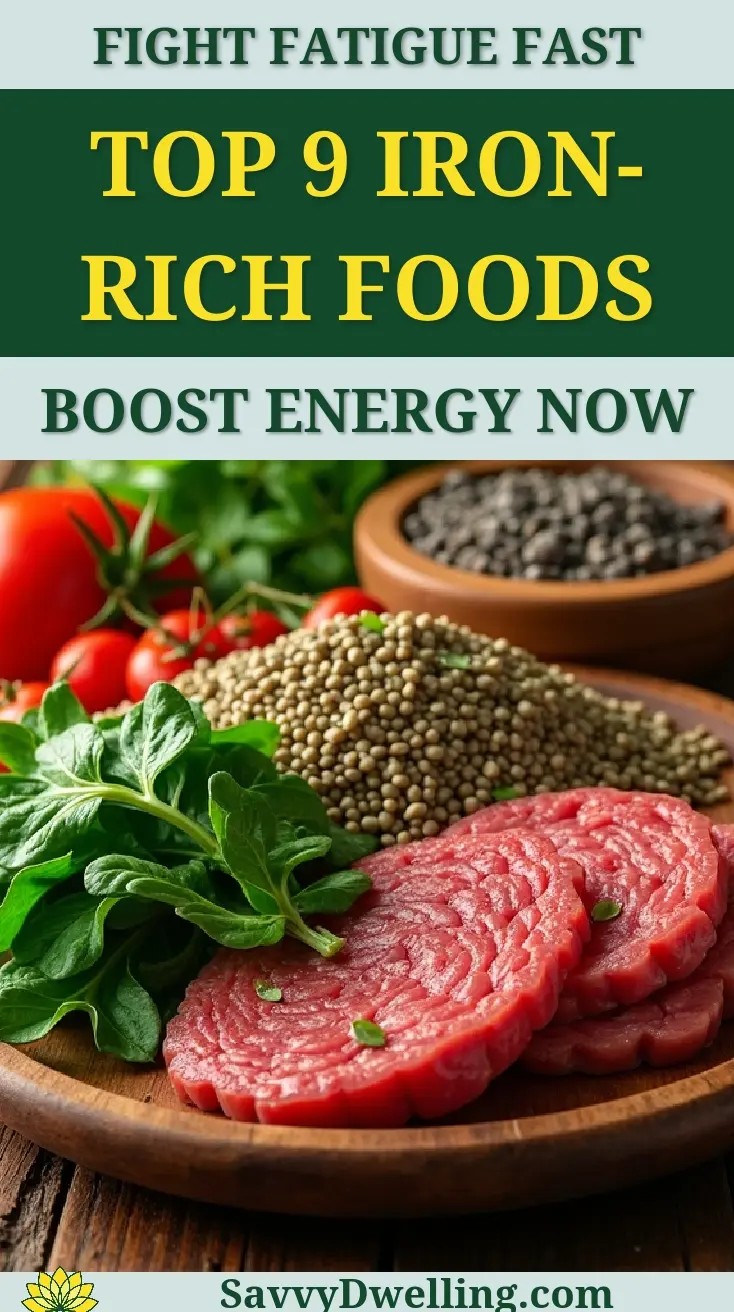Why Salmon is One Of the Healthiest Foods You Can Eat
Feeling like you’re constantly battling fatigue, brain fog, or just not performing at your best? You’re not alone—many people struggle with energy and focus because they’re missing key nutrients that their bodies desperately need. The modern diet often falls short on the specific fats and proteins that fuel optimal health.
Here’s the good news: salmon might be the single most powerful food you can add to your weekly routine. We’ve researched the science behind salmon’s incredible nutrient profile and found it delivers more health benefits per serving than almost any other protein source. This guide breaks down exactly why salmon earns its reputation as a superfood and how it can transform your energy, brain function, and overall wellbeing.
Contents
- At a Glance: Salmon’s Top Health Benefits
- 1. Rich Source Of Omega-3 Fatty Acids
- 2. Complete High-quality Protein Powerhouse
- 3. Brain-supporting Nutrients for Cognitive Health
- 4. Heart-healthy Properties
- 5. Bone and Joint Health Support
- 6. Immune System and Skin Health Benefits
- 7. Weight Management and Metabolism Support
- Wild Vs. Farmed: Making the Healthiest Choice
- Common Mistakes to Avoid When Adding Salmon to Your Diet
- Frequently Asked Questions
- Final Words
At a Glance: Salmon’s Top Health Benefits
If you’re looking to boost your health with just one food choice, salmon delivers an impressive nutritional punch that’s hard to match. This pink-fleshed fish packs more essential nutrients per serving than almost any other protein source you’ll find.
Here’s what makes salmon such a powerhouse for your wellbeing:
- Omega-3 fatty acids: EPA and DHA support heart health, brain function, and reduce inflammation throughout your body
- Complete protein: All nine essential amino acids your muscles need for repair and growth
- Brain-boosting nutrients: B vitamins, selenium, and DHA work together to support cognitive function and mental clarity
- Heart protection: Potassium helps regulate blood pressure while omega-3s support cardiovascular health
- Bone strength support: Vitamin D, calcium, and phosphorus team up to maintain strong bones
- Immune system boost: Vitamin A and antioxidants help your body fight off illness
- Weight management aid: High protein content promotes satiety while healthy fats support metabolism
- Skin health enhancement: Omega-3s and astaxanthin work from the inside out for healthier-looking skin
What sets salmon apart from other fish is its unique combination of nutrients working synergistically. While many foods offer one or two health benefits, salmon nutrition information shows it delivers comprehensive support for multiple body systems simultaneously.
The salmon fat content isn’t something to worry about either. These are the healthy fats your body craves—the ones that actually help reduce harmful inflammation rather than promote it.
1. Rich Source Of Omega-3 Fatty Acids
How Omega-3s Support Your Body
When you think about salmon health benefits, omega-3 fatty acids top the list for good reason. These essential fats act like your body’s internal maintenance crew, working behind the scenes to keep inflammation in check and your cells functioning smoothly.
Your body can’t produce omega-3s on its own, making dietary sources absolutely vital. These healthy fats support everything from your heart rhythm to joint comfort, making salmon one of nature’s most complete nutritional packages.
Think of omega-3s as cellular messengers. They help your body communicate more effectively, reducing chronic inflammation that can contribute to various health concerns over time. Without enough omega-3s, your body may struggle to keep inflammation in check. Recognizing the signs of insufficient omega-3 intake is crucial for maintaining overall health and well-being.
EPA and DHA Content in Salmon
Not all omega-3s are created equal, and this is where salmon truly shines. Wild Atlantic salmon contains approximately 1,800 milligrams of combined EPA and DHA per 3.5-ounce serving, while farmed salmon provides around 2,300 milligrams.
EPA (eicosapentaenoic acid) primarily supports heart health and helps manage inflammation, while DHA (docosahexaenoic acid) is your brain’s best friend. This dynamic duo works together to support cognitive function and cardiovascular wellness.
Compare this to other fish: tuna contains about 400 milligrams, while cod provides roughly 200 milligrams per serving. The difference in salmon nutrition information becomes crystal clear when you see these numbers side by side.
Daily Omega-3 Requirements and Salmon Portions
Health experts recommend 250-500 milligrams of combined EPA and DHA daily for general wellness, with higher amounts for specific health goals. A single 3.5-ounce serving of salmon provides 4-9 times your daily omega-3 needs.
This means eating salmon just twice per week easily meets your omega-3 requirements. A typical salmon fillet weighs about 6 ounces, giving you even more nutritional bang for your buck.
For reference, here’s what different salmon portions provide:
- 3 ounces (palm-sized): 1,500-2,000mg omega-3s
- 6 ounces (typical fillet): 3,000-4,000mg omega-3s
- 1 ounce (snack portion): 500-650mg omega-3s

2. Complete High-quality Protein Powerhouse
Essential Amino Acid Profile
Protein quality matters just as much as quantity, and salmon delivers all nine essential amino acids your body needs but can’t produce on its own. This makes it a complete protein source, putting it in the same league as eggs and lean meats.
Your body uses these amino acids like building blocks for everything from muscle tissue to enzymes and hormones. Salmon’s amino acid profile is particularly rich in lysine and leucine, two compounds that support muscle synthesis and immune function.
Unlike plant proteins that often lack one or more essential amino acids, salmon gives you the full spectrum in optimal ratios. This completeness means your body can use salmon protein more efficiently than many other sources.
Protein Content Compared to Other Fish
When it comes to salmon nutritional facts, the protein content stands impressively high. A 3.5-ounce serving provides approximately 22-25 grams of high-quality protein, depending on the variety.
Here’s how salmon stacks up against other popular fish:
- Salmon: 22-25g protein per 3.5 oz
- Tuna: 23-25g protein per 3.5 oz
- Cod: 18-20g protein per 3.5 oz
- Tilapia: 20-22g protein per 3.5 oz
- Mackerel: 19-21g protein per 3.5 oz
What sets salmon apart isn’t just the protein amount, but its combination with omega-3s and other nutrients that work synergistically. You’re getting premium protein alongside healthy fats, vitamins, and minerals in one package.
Supporting Muscle Health and Recovery
If you’re wondering why is salmon good for you from a fitness perspective, the answer lies in its protein quality and anti-inflammatory properties. The high biological value protein provides all the amino acids needed for muscle repair and growth.
Salmon’s omega-3 content may also help reduce exercise-induced muscle soreness and speed recovery time. This dual benefit makes it particularly valuable for active individuals and older adults looking to maintain muscle mass.
The protein in salmon is also highly digestible, with a biological value of about 94. This means your body can effectively use most of the protein you consume, making each serving count toward your daily protein goals.
Also See: 10 Surprising Reasons Dark Chocolate is a Superfood
3. Brain-supporting Nutrients for Cognitive Health
DHA and Brain Function
Your brain is nearly 60% fat, and much of that fat should ideally be DHA. Salmon provides one of the richest dietary sources of DHA, the omega-3 fatty acid that literally builds your brain tissue. Eating foods rich in DHA can support overall brain health and enhance memory function. Incorporating brain-boosting foods into your diet can preserve memory and cognitive abilities as you age.
DHA concentrates in brain cell membranes, where it helps maintain membrane fluidity and supports communication between neurons. Research suggests adequate DHA intake may support memory, learning, and overall cognitive performance throughout life.
Think of DHA as premium fuel for your brain’s engine. Without enough of this essential fat, your cognitive machinery simply can’t run at peak efficiency.
B Vitamins for Mental Clarity
Beyond omega-3s, salmon nutrition includes an impressive array of B vitamins that work like cognitive co-pilots. A single serving provides substantial amounts of B6, B12, and niacin (B3). Ensuring adequate intake of B12 is essential for maintaining energy levels and supporting brain health. Exploring the top 15 vitamin B12 foods can help you discover delicious options to incorporate into your diet.
Vitamin B12 is particularly noteworthy, as salmon provides about 125% of your daily needs per serving. B12 deficiency can lead to brain fog, memory issues, and fatigue, making salmon an excellent insurance policy for mental sharpness.
These B vitamins work together to support neurotransmitter production, the chemical messengers that allow your brain cells to communicate effectively. Without adequate B vitamins, even small mental tasks can feel more challenging.
Selenium’s Role in Cognitive Support
Often overlooked in discussions of health benefits of salmon, selenium acts as a powerful antioxidant that specifically protects brain tissue from oxidative stress. A 3.5-ounce salmon serving provides about 75% of your daily selenium needs.
Selenium works alongside vitamin E and other antioxidants to form your brain’s protective shield against cellular damage. This protection becomes increasingly important as we age and face more oxidative stress from daily life.
Low selenium levels have been linked to cognitive decline and mood changes, making salmon’s selenium content another compelling reason to include it in your regular meal rotation.
4. Heart-healthy Properties
How Omega-3s Support Cardiovascular Health
Your heart gets significant protection from salmon’s abundant omega-3 fatty acids, which work like nature’s cardiovascular shield. EPA and DHA fatty acids help maintain healthy cholesterol levels by raising beneficial HDL cholesterol while supporting normal triglyceride levels.
These powerful fats also support healthy blood vessel function. They help keep artery walls flexible and smooth, reducing the likelihood of dangerous plaque buildup that can restrict blood flow.
Research shows that people who eat salmon regularly tend to have better heart rhythm patterns. The omega-3s in salmon nutrition help maintain steady, healthy heartbeats by supporting your heart’s electrical system.
Potassium for Blood Pressure Support
A single 4-ounce serving of salmon provides about 628 milligrams of potassium, making it an excellent addition to a heart-healthy diet. This mineral works as a natural counterbalance to sodium, helping your body maintain healthy blood pressure levels. Incorporating potassium-rich foods not only supports heart health but also enhances overall well-being. Foods like bananas, spinach, and sweet potatoes are among the top choices for boosting potassium intake and promoting a healthy heart.
Potassium helps your blood vessels relax and widen, reducing the pressure needed to pump blood throughout your body. When you combine this with salmon’s omega-3 content, you’re getting a powerful one-two punch for cardiovascular support.
Many people don’t get enough potassium in their daily diet. Adding salmon twice a week can help bridge this nutritional gap while providing delicious, satisfying meals.
Anti-inflammatory Benefits
Chronic inflammation acts like a slow burn in your cardiovascular system, potentially damaging blood vessels over time. Salmon’s omega-3 fatty acids work as natural inflammation fighters, helping calm this harmful process. Incorporating anti-inflammatory foods into your diet can significantly support your overall health. Foods high in antioxidants and omega-3s, such as berries and nuts, make great additions to combat inflammation effectively.
The anti-inflammatory compounds in salmon help reduce C-reactive protein levels, a key marker that healthcare providers monitor for heart health. Lower inflammation levels support better overall cardiovascular function.
Unlike some anti-inflammatory medications that can have side effects, salmon provides these benefits through natural, food-based nutrition. You’re nourishing your heart while enjoying a delicious meal.

5. Bone and Joint Health Support
Vitamin D Content in Salmon
Salmon stands out as one of the few food sources rich in vitamin D, providing about 645 IU per 4-ounce serving. This sunshine vitamin plays a crucial role in helping your body absorb calcium effectively, making it essential for strong bones.
Wild-caught salmon typically contains higher vitamin D levels than farmed varieties. If you live in areas with limited sunlight or spend most of your time indoors, salmon becomes even more valuable for maintaining adequate vitamin D levels.
Your bones constantly rebuild themselves throughout your life. Without enough vitamin D, this process becomes inefficient, potentially leading to weaker bone structure over time.
Calcium and Phosphorus for Bone Strength
While salmon isn’t the highest calcium source, it provides a well-balanced combination of calcium and phosphorus that work together synergistically. A 4-ounce serving contains about 20 milligrams of calcium and 300 milligrams of phosphorus, creating an ideal ratio for bone health. Foods rich in calcium, like salmon, play a crucial role in maintaining strong bones. Including a variety of these top 25 calcium-rich foods in your diet can further enhance your bone strength and overall health.
Phosphorus makes up about 85% of the mineral content in your bones and teeth. The phosphorus in salmon nutrition helps maintain the structural integrity of your skeletal system while supporting proper bone formation.
Canned salmon with soft, edible bones provides even more calcium – up to 275 milligrams per serving. These tiny bones are completely safe to eat and boost the bone-building benefits significantly.
Anti-inflammatory Effects on Joints
The omega-3 fatty acids in salmon help soothe joint discomfort by reducing inflammatory compounds that can cause stiffness and pain. EPA and DHA work at the cellular level to calm overactive inflammatory responses in joint tissues.
Regular salmon consumption may help maintain better joint flexibility and comfort during daily activities. The anti-inflammatory effects don’t happen overnight but build up with consistent intake over weeks and months.
Unlike temporary pain relief methods, salmon provides ongoing nutritional support for joint health. You’re addressing the underlying inflammatory processes while enjoying the many other salmon health benefits.
6. Immune System and Skin Health Benefits
Vitamin A and Immune Function
Salmon provides substantial amounts of vitamin A, with a 4-ounce serving containing about 236 IU, supporting your immune system’s ability to fight off infections. This fat-soluble vitamin helps maintain the integrity of your skin and mucous membranes, which act as your body’s first line of defense.
Vitamin A also supports the production and function of white blood cells, your immune system’s specialized defenders. These cells patrol your body, identifying and neutralizing potential threats before they can cause illness.
The vitamin A in salmon comes in a highly bioavailable form, meaning your body can easily absorb and use it. This makes salmon more effective than many plant-based vitamin A sources for immune support.
Omega-3s for Skin Health
Your skin benefits tremendously from salmon’s omega-3 fatty acids, which help maintain moisture, elasticity, and overall skin barrier function. EPA and DHA support the production of skin-protecting oils while reducing inflammatory skin responses.
These healthy fats help keep skin cells plump and well-hydrated from the inside out. People who eat salmon regularly often notice improvements in skin texture and appearance within several weeks.
The omega-3s also support wound healing and may help protect your skin from environmental stressors. This makes salmon particularly valuable during harsh weather conditions or high-stress periods.
Antioxidant Properties Of Astaxanthin
Astaxanthin gives salmon its distinctive pink color and provides powerful antioxidant protection that’s up to 6,000 times stronger than vitamin C. This remarkable compound helps protect your cells from free radical damage that can accelerate aging and compromise immune function.
Wild salmon typically contains higher levels of astaxanthin than farmed varieties because they consume krill and other marine organisms naturally rich in this compound. The deeper the pink color, the higher the astaxanthin content.
This antioxidant crosses the blood-brain barrier and blood-retinal barrier, providing protection for your eyes and brain that many other antioxidants can’t reach. It’s like having a specialized bodyguard for your most vital organs.
7. Weight Management and Metabolism Support
Protein’s Role in Satiety
If you’ve been struggling with hunger between meals, salmon’s impressive protein content might be the solution you need. A 3.5-ounce serving delivers approximately 25 grams of complete protein, which triggers the release of satiety hormones like GLP-1 and PYY.
This protein powerhouse keeps you feeling fuller for 3-4 hours longer than meals centered around refined carbohydrates. The thermic effect of protein also means your body burns about 20-30% of salmon’s protein calories just during digestion, naturally boosting your metabolic rate.
Healthy Fats for Metabolism
Unlike processed foods that can slow your metabolism, salmon’s omega-3 fatty acids actually enhance your body’s fat-burning capabilities. EPA and DHA improve insulin sensitivity, helping your cells use glucose more efficiently instead of storing it as fat.
These healthy fats also support mitochondrial function—the cellular powerhouses responsible for energy production. Regular salmon consumption can increase your resting metabolic rate by 3-5%, making weight management significantly easier. Incorporating metabolism-boosting foods into your diet can enhance these effects even further. A diverse selection of such foods can help streamline weight loss efforts and improve overall health.
Low-calorie, Nutrient-dense Option
When you’re managing your weight, every calorie needs to count nutritionally. Salmon delivers exceptional value with only 206 calories per 3.5-ounce serving while providing over 20 essential nutrients.
Compare this to other protein sources: chicken breast has similar calories but lacks omega-3s, while red meat often contains twice the calories with fewer micronutrients. Salmon gives you maximum nutrition per calorie, supporting both weight loss and overall health simultaneously.
Wild Vs. Farmed: Making the Healthiest Choice
Nutritional Differences
The nutritional gap between wild and farmed salmon is more significant than most people realize. Wild salmon typically contains 20-30% more omega-3 fatty acids due to their natural diet of algae, krill, and smaller fish.
Farmed salmon often has higher overall fat content but with less beneficial omega-3 ratios. Wild salmon provides approximately 1.8 grams of omega-3s per serving compared to 1.1 grams in farmed varieties. However, both options remain excellent protein sources with substantial health benefits.
Wild varieties also contain higher levels of astaxanthin, the powerful antioxidant responsible for salmon’s pink color. This translates to enhanced anti-inflammatory properties and better cellular protection.
Sustainability Considerations
Choosing sustainable salmon supports both your health and ocean ecosystems. Look for certifications from the Marine Stewardship Council (MSC) for wild-caught salmon or the Aquaculture Stewardship Council (ASC) for responsibly farmed options.
Alaska wild salmon consistently ranks as one of the most sustainable seafood choices, with well-managed fisheries and stable populations. Sustainable sourcing ensures you’re getting salmon with minimal environmental contaminants while supporting responsible fishing practices.
Fresh, Frozen, and Canned Options
Benefits of Fresh Salmon
Fresh salmon offers the most flexibility in preparation methods and typically provides the best texture and flavor. When purchasing fresh, look for bright, clear eyes, firm flesh that springs back when pressed, and a mild ocean scent.
Fresh salmon retains peak levels of heat-sensitive nutrients like vitamin D and certain B vitamins when consumed within 1-2 days of purchase.
Advantages of Frozen Salmon
Frozen salmon often surpasses fresh in terms of convenience and sometimes even nutrition. Fish frozen at sea immediately after catch can retain more nutrients than “fresh” fish that’s been transported for days.
Frozen options cost 30-50% less than fresh while maintaining nearly identical nutritional profiles. The freezing process actually breaks down cell walls slightly, making some nutrients more bioavailable when cooked.
Canned Salmon: Convenience and Nutrition
Don’t overlook canned salmon as a nutritious option. The canning process softens the bones, making them edible and dramatically increasing calcium content—often providing 180-200mg of calcium per serving.
Canned salmon with bones contains nearly as much calcium as a glass of milk. Choose varieties packed in water rather than oil to maximize protein content while controlling calories. The convenience factor makes it perfect for quick, nutritious meals when fresh options aren’t available.
Common Mistakes to Avoid When Adding Salmon to Your Diet
Overcooking and Nutrient Loss
Overcooked salmon loses both flavor and nutritional value, particularly heat-sensitive omega-3 fatty acids and B vitamins. The ideal internal temperature for salmon is 145°F (63°C), where the flesh flakes easily but remains moist.
Cooking salmon at high temperatures above 400°F can destroy up to 25% of its omega-3 content. Gentle methods like baking at 350°F, steaming, or poaching preserve maximum nutrients while maintaining optimal texture.
Ignoring Mercury and Contaminant Concerns
While salmon is relatively low in mercury compared to larger predatory fish, choosing quality sources still matters. Farm-raised salmon may contain higher levels of PCBs and other environmental contaminants depending on their feed and location.
Pregnant women and young children should prioritize wild-caught Alaskan salmon when possible. The FDA recommends 2-3 servings of low-mercury fish weekly, and salmon fits comfortably within these guidelines for most people.
Not Varying Preparation Methods
Eating salmon the same way repeatedly can lead to flavor fatigue and potentially unbalanced nutrition. Different cooking methods preserve different nutrients and create varied flavor profiles that keep salmon interesting in your diet.
Grilling provides smoky flavors but may create some harmful compounds at very high heat. Baking preserves moisture and nutrients, while poaching offers the gentlest preparation. Rotating between methods ensures you get diverse nutrients while maintaining long-term dietary adherence.
Choosing Poor-quality Sources
Not all salmon is created equal, and poor-quality sources can significantly impact both taste and nutrition. Avoid salmon with strong fishy odors, slimy textures, or dull coloring, as these indicate deteriorating quality and potentially reduced nutritional content.
Establishing relationships with reputable fishmongers or choosing certified sustainable brands ensures consistent quality and maximum health benefits from your salmon consumption. Quality salmon should smell like clean ocean water and have firm, vibrant flesh that holds together well.

Frequently Asked Questions
Is Salmon Safe to Eat During Pregnancy?
Yes, salmon is generally safe and recommended during pregnancy due to its high omega-3 fatty acid content, which supports fetal brain and eye development. However, it’s important to choose low-mercury options like wild-caught or responsibly farmed salmon. Limit consumption to 2-3 servings per week to minimize exposure to potential contaminants while maximizing benefits.
Can Children Eat Salmon Regularly?
Absolutely! Salmon is an excellent food for children, providing essential nutrients for growth, such as protein and DHA for cognitive development. Serve age-appropriate portions (e.g., 1-2 ounces for toddlers) and ensure it’s fully cooked to avoid foodborne illness. Introduce it early to help establish healthy eating habits, but monitor for any signs of allergies, especially if there’s a family history of seafood allergies.
How Should I Store Fresh Salmon to Maintain Its Quality?
Store fresh salmon in the refrigerator at 32-38°F (0-3°C) and use it within 1-2 days for optimal freshness. For longer storage, wrap it tightly in plastic or foil and freeze it; frozen salmon can last up to 3 months. Always keep salmon cold and avoid leaving it at room temperature for more than 2 hours to prevent bacterial growth and maintain nutrient integrity.
Does Salmon Offer Benefits for Hair Health?
Yes, the omega-3 fatty acids and high-quality protein in salmon can promote stronger, shinier hair by nourishing hair follicles and improving scalp circulation. Regular consumption may help reduce hair thinning and support overall hair vitality. Additionally, incorporating other natural foods rich in vitamins and minerals can further enhance hair growth and reduce thinning. For best results, include salmon in a balanced diet rich in other hair-healthy nutrients like biotin and zinc.
How Does Salmon Compare to Plant-based Omega-3 Sources?
Salmon provides EPA and DHA omega-3s directly, which are more efficiently used by the body compared to the ALA omega-3s found in plant sources like flaxseeds or walnuts. For non-fish eaters, algae-based supplements are a effective alternative to obtain DHA. While plant sources are beneficial, incorporating salmon ensures a more direct intake of these critical fats for heart and brain health.
Final Words
Adding salmon to your weekly meal rotation isn’t just about following health trends-it’s about giving your body one of nature’s most complete nutritional packages. From supporting your heart and brain to strengthening bones and boosting immunity, salmon delivers benefits that few other foods can match.
Whether you choose wild-caught, sustainably farmed, fresh, frozen, or canned varieties, you’re making a choice that supports your long-term wellness. Start with just one or two servings per week, experiment with different cooking methods, and pay attention to how your body responds to this nutrient powerhouse.
Ready to transform your health one delicious meal at a time? Check out Savvy Dwelling for more evidence-based nutrition guides, healthy recipes, and wellness tips that make living well both simple and sustainable. Your journey to better health starts with your next grocery trip-make salmon part of it.


